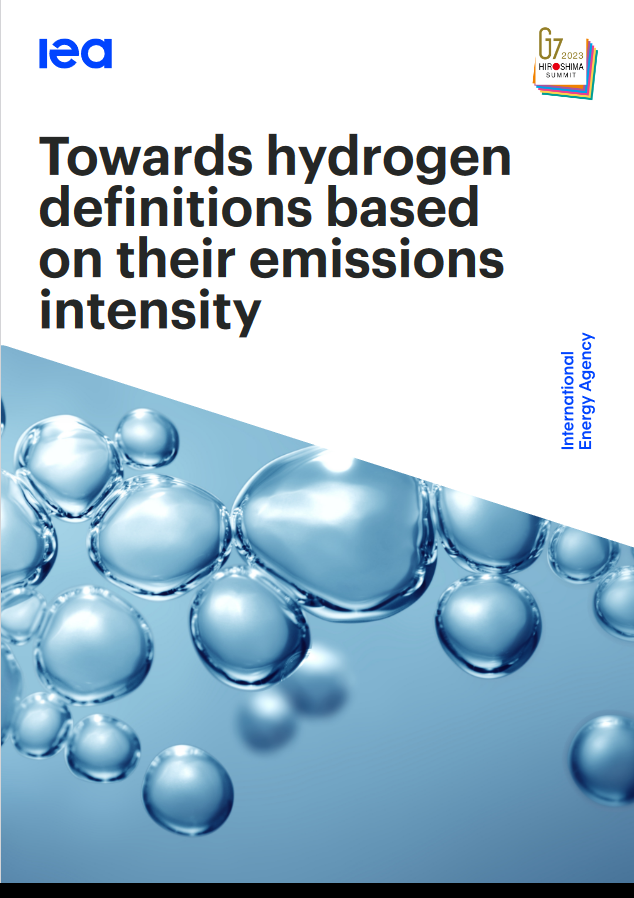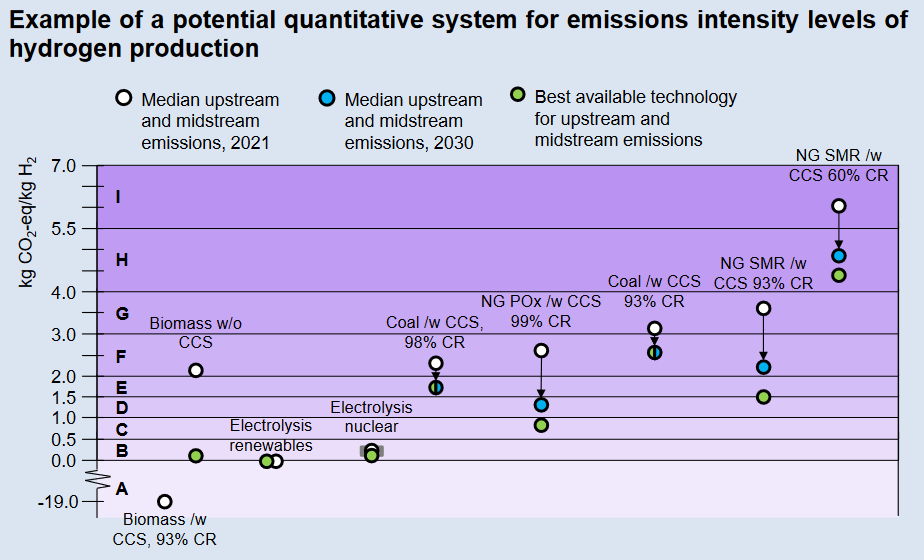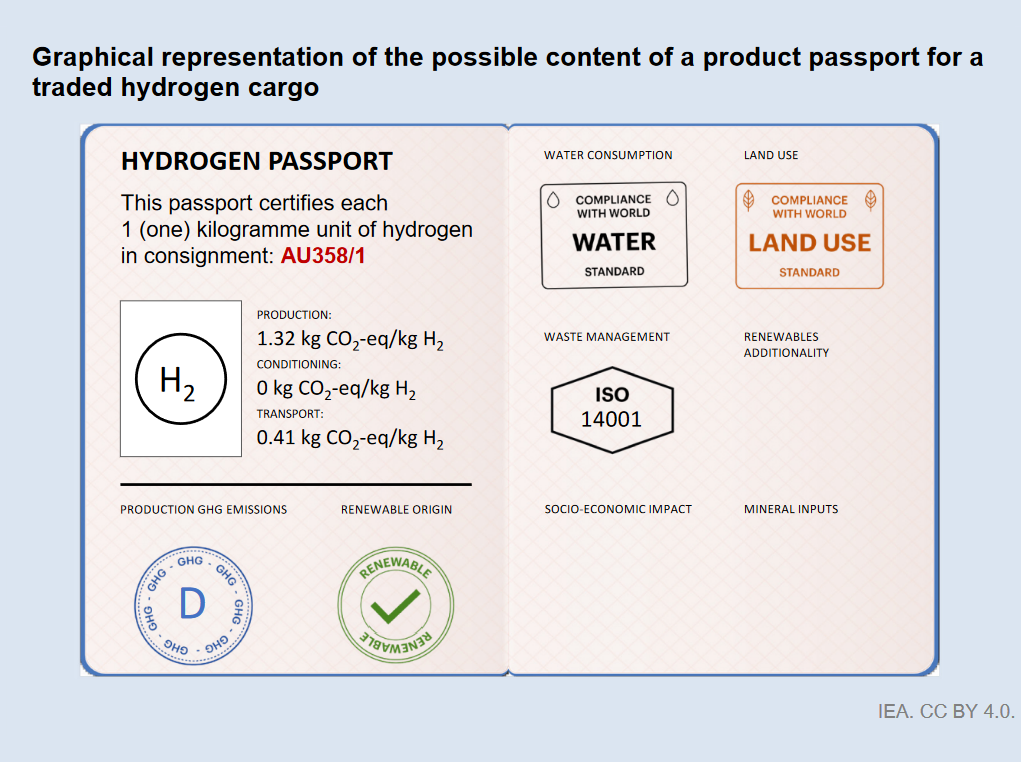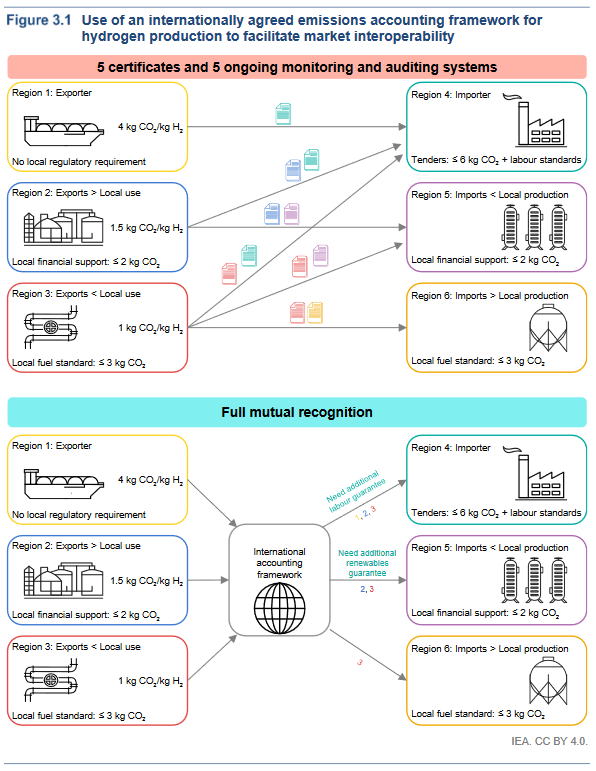Scrap “green” and “blue” hydrogen, use emissions intensity instead: new IEA report
By Oscar Pearce on May 05, 2023

The International Energy Agency (IEA) has released a new report proposing new hydrogen definitions that replace color labels such as ‘green’, ‘blue’ and ‘grey’ with a taxonomy based on underlying production emissions. The report argues that an international emissions accounting framework for hydrogen is necessary to ensure “much-needed transparency to facilitate adoption and scale-up”, and that their new definitions could be a starting point.
A new taxonomy
The IEA is concerned by the “significant divergences” between emerging certification schemes, an issue raised earlier this year in an IRENA report. One area of particular contrast is in labelling conventions.
Terminologies that use colours or qualifiers (such as “sustainable”, “low-carbon” etc.) often mask a wide range of different emissions intensities, depending, for example, on the source of electricity, the CO2 capture rate or the emissions associated with upstream fossil fuel production. Numerical values that reflect emissions intensities and that can be calculated directly for a specific production route are more transparent and allow project developers to assess regulatory compliance efficiently.
From Towards hydrogen definitions based on their emissions intensity, IEA (Apr 2023)

The IEA’s proposed solution is “a set of nine distinct, technology-neutral levels”. Beginning with level “A” (emissions intensities below zero), each subsequent level represents an increase in emissions intensity ending with level “I” (7 kg CO2-eq/kg H2). The cap at level “I” was intended to capture all “known hydrogen production routes that can achieve lower emissions than unabated fossil-based routes”.
It remains to be seen whether this solution will form the basis of an internationally agreed emissions accounting framework, or at least influence emerging national certification schemes. The UK low-carbon hydrogen certification scheme, for example, has yet to reach a conclusion on whether it adopts a tiered labelling approach. However, many jurisdictions (e.g. France, China, and Australia) have already decided against the use of labelling in their under-development schemes, bringing into question the likelihood of the IEA’s tiered approach being widely adopted.
An international approach

In addition to proposing a new set of definitions, the report attempts to chart a path forward from the current, disjointed approach to certification. Several outstanding issues are identified in the report, most notably the expansion of accounting frameworks to “address all emissions associated with hydrogen supply chains” (i.e., transport and conversion), and “compatibility with other sustainability requirements” (i.e., water/land use, socioeconomic factors). The report finds that an international framework is the most promising avenue for addressing those outstanding issues and “[facilitating] market interoperability”.
As for how this vision could be realised, the IEA assigns responsibilities to “many different and interconnected stakeholders”. The report was written with the objective of influencing the April 2023 G7 Climate, Energy and Environmental Ministerial meeting. So, understandably, it argues that “the most likely route to wide adoption [of an international framework] is via a core group of committed governments that represent a significant share” of the market.
Towards mutual recognition

The international framework envisioned by the IEA depends on “mutual recognition of certification schemes” to “minimise market fragmentation”. Mutual recognition refers to the process by which nations agree to accept each other’s certification schemes or standards as equivalent, without the need for additional assessment processes. Mutual recognition could radically reduce barriers to trade in the global hydrogen marketplace, as producers avoid having to obtain new certifications for each jurisdiction they export to.
Notably, mutual recognition does not require entirely identical schemes. As in Figure 3.1 of the report (see left), varying thresholds can be adopted by different jurisdictions to reflect varying circumstances. All that is required for mutual recognition is an underlying alignment of certification methodology and rigour.
Importance of the IPHE methodology
To this end, the report highlights the International Partnership for Hydrogen and Fuel Cells in the Economy (IPHE)’s methodology for calculating hydrogen production emissions (along with the soon-to-be-completed transport methodology). These can form the basis of mutual recognition, according to the report. Indeed, the IPHE methodology is guiding the ISO’s first hydrogen emissions accounting standard.
The report argues that this general acceptance of the IPHE methodology paves the way for its definitions based on “the emissions intensity of hydrogen production”, as there is a “joint understanding” of how to calculate that emissions intensity.
Promisingly, the communiqué released after the G7 meeting in April echoed the IEA’s appreciation of the IPHE’s efforts and called for further international cooperation in the space:
We affirm the importance of developing international standards and certification including for a GHG calculation methodology for hydrogen production and mutual recognition mechanism for carbon intensity-based tradability, transparency, trustworthiness and sustainability…We note with appreciation that the International Partnership for Hydrogen and Fuel Cells in the Economy (IPHE) has advanced progress of the hydrogen standards and certification action.
From G7 Climate, Energy and Environment Ministers’ Communiqué (Apr 2023)
You can read the full IEA report here.